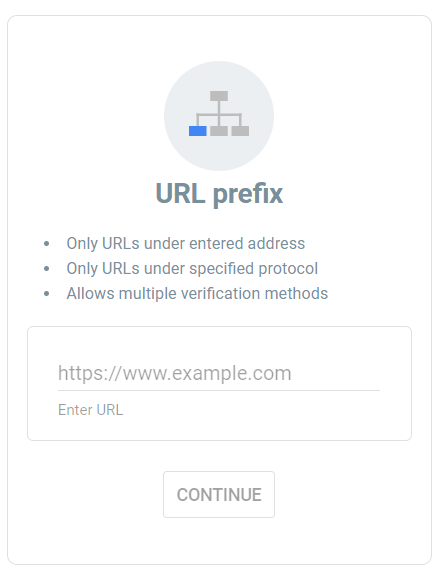One of the most frequent questions we hear when doing technical SEO is, “Are subdomains bad for SEO?” While it’s true that subdomains and root domains are treated like completely different websites in the eyes of search engines, the answer isn’t always clear cut. Depending on the size and facets of your website, a subdomain may make perfect sense or be hurting your SEO efforts. The following article aims to answer these questions, but for those who don’t want to read the entire article:
TL;DR
- If your business is massive and provides a number of different services that stand alone by themselves, then yes, a subdomain structure makes sense from an organizational standpoint. Think of Disney for example – movies.disney.com, new.disney.com, books.disney.com. These are all part of the Disney family but serve wildly different purposes and segmenting them out as such can be very helpful for users and search engines.
- If your website is small and you are only considering having a blog or resources section split out onto a subdomain, then a subdomain set up can hurt your SEO by restricting the flow of much needed link equity from reaching your most important pages.
Table of Contents
- What is a Subdomain?
- Reasons to Use Subdomains
- What is a Subdirectory?
- Reasons to Use Subdirectories
- Subdomain vs Subfolder FAQs
What is a Subdomain?
As the name suggests, a subdomain is an additional web property to your main domain. For example:
website.com vs support.website.com
Even though there is a relationship between a subdomain and the main domain, they are treated as two separate websites by search engines. How do we know this?
1. Within Google Search Console, main domains and subdomains must be verified separately when using the URL prefix method.

2. When using a tool like ahrefs, a subdomain shares the domain rating of the main domain but does not have the appropriate number of referring domains.

3. Subdomains and root domains can exist on different servers and IP addresses.
Think of this analogy – a subdomain is like a friend you refer for a job interview. They are getting some authority and trust by being a referral from a trusted employee, but they still have to stand alone and earn their own credentials.
Reasons to Use a Subdomain
Good reasons to use a subdomain over a subfolder are few and far between, but there are valid reasons. Some of these include:
- Staging websites: When building or designing a new website, subdomains are frequently used as a means of creating a copy of the website and making edits while keeping it completely separate from the main website. Just make sure the staging subdomain is non-indexable by search engines!
- Organization: As stated above, if you have a huge, multi-faceted website, subdomains can be a good way to keep all these arms of your business separate and siloed. Especially if your website is highly authoritative already, then splitting up between separate properties is not a large concern.
What is a Subdirectory?
Subdirectories or subfolders are folders of pages that exist on the same domain. For example:
website.com vs website.com/folder/ or website.com/folder/page/
This is the classic website hierarchy that most users are familiar with. Unlike subdomains, subfolders are considered part of the same domain, exist at the same IP address and share link equity much more freely throughout the entire property.
Reasons to Use a Subdirectory
In almost all cases, a subdirectory is going to be the better option for SEO than a subdomain. This is due to the sharing of link equity and authority across pages. Instead of being spread out between multiple properties, in a subfolder structure, that link equity and authority is concentrated in one place. This means that all backlinks and internal links are going to have more juice to provide a lift for keyword rankings.
Despite what Google says about these two set ups being treated equally, both from personal experience and multiple case studies, subfolders almost always result in better rankings and organic visibility. Subfolders are a better set up for things like:
- Blogs: website.com/blog/
- Resource centers: website.com/resources/
- Multi-language websites: website.com/en/
- Multi-location websites: website.com/location/
Especially if making the most of the domain rating and link equity is a priority (which is the case for most websites), then a subfolder structure is going to be superior for SEO.
Subdomain vs Subfolder FAQs
Q: Can subdomains still rank?
A: Of course! It may be a little more challenging without the full force of the main domain’s authority behind it, but subdomains rank organically and earn answer boxes all the time.
Q: Should I switch from a subdomain to subfolders?
A: This depends on the current performance of the subdomain. If you are already seeing good rankings and performance, then it may not make sense to make the switch and set up mass redirects. However, if something like a blog is on a subdomain, long term it probably makes more sense being a subfolder.
Q: What is a reverse proxy or reverse DNS lookup?
A reverse proxy is an intermediary server that sends and receives requests from other servers. For the sake of this article, it can be used to configure subdomains to appear as subfolders at the server level. This is a task that requires advanced technical knowledge.
Do You Need Help with Technical SEO?
Whether you are deciding between a subdomain or subfolder set up or need help with overall information architecture, setting up the foundation of your website is vital to long term organic success. At NextLeft, we know what it takes to get organic results. Contact NextLeft for an audit of your website and let us help you dominate the SERPs today!




